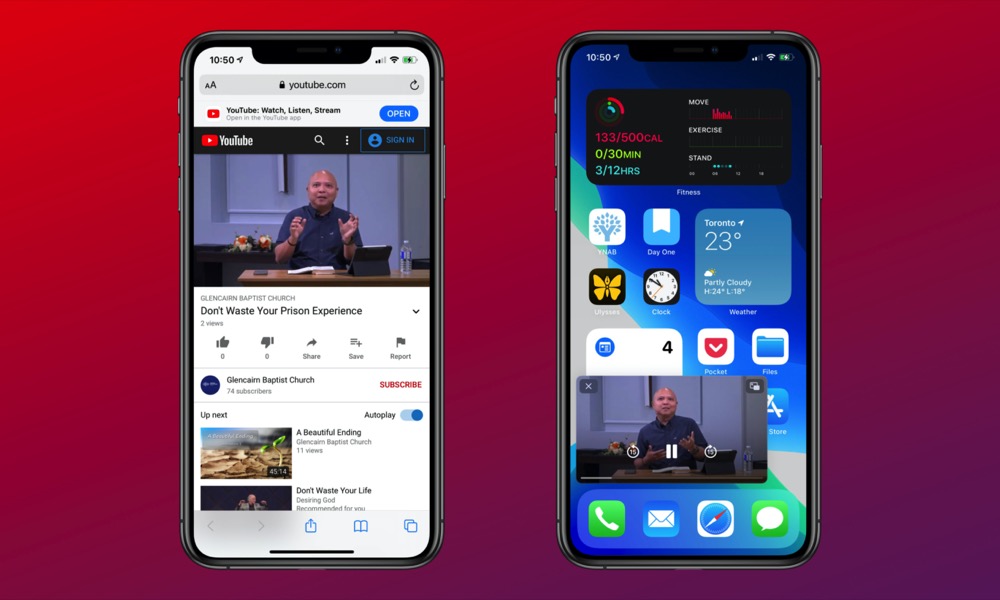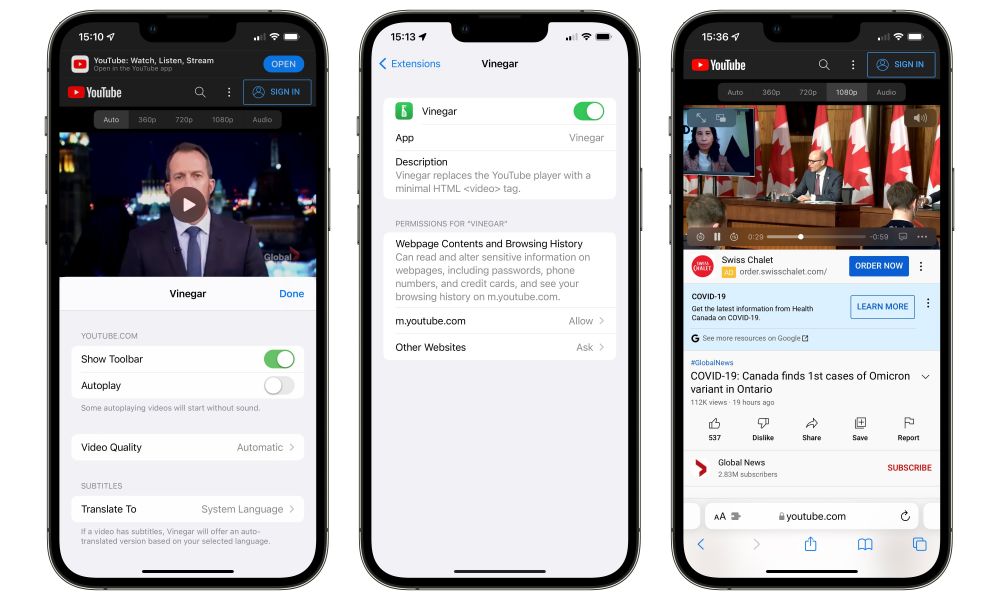YouTube TV Is Rolling Out Picture-in-Picture to All iOS 15 Devices | But What About Regular YouTube?
 Credit: Jesse Hollington
Credit: Jesse Hollington
Toggle Dark Mode
To say that Google drags its heels in adopting support for new iPhone and iPad features is an understatement. We’ve seen this with everything from dark mode in Gmail and Google Maps to iPad split view multitasking.
Since YouTube is a part of the enormous Google empire, it doesn’t fare any better in this regard. In fact, we’d argue that some of its failings are even more egregious. Apple introduced picture-in-picture video support to the iPad in 2015 with iOS 9. In the years following, everyone from Amazon to Vudu has embraced the new technology.
Considering that it took Google years to get with the program, it’s pretty amusing to look back on folks using the word “finally” in June 2016, when picture-in-picture support came to Netflix nine whole months after its debut in iOS 9.
On the other hand, Google didn’t even show a hint of embracing picture-in-picture until the feature came to the iPhone with iOS 14 in 2020. We got a glimmer of hope in August 2020, but it still took another year of false starts before it arrived — with a well-deserved finally.
What was even more frustrating is that iPad users had always been able to get picture-in-picture on YouTube simply by deleting the YouTube app and using Safari instead. It was a slightly “hacky” workaround, but it did the job while also suggesting that Google didn’t have anything inherently against the feature; it simply couldn’t be bothered baking it into its iPad app.
However, when Apple added picture-in-picture support to the iPhone, it looked like YouTube was preparing to go in the opposite direction, cracking down on picture-in-picture rather than adopting it. For a while, it stopped working in Safari — at least not for anyone who wasn’t a YouTube Premium subscriber — although the company reversed course on that a few weeks later.
It wasn’t until last year that Google spoke up to explain that picture-in-picture would indeed be coming to the YouTube app, gradually rolling out to everyone in the U.S. and YouTube Premium customers worldwide.
However, this only applied to the main YouTube app, and even now, nearly a year later, it’s still considered an “experimental feature” exclusive to YouTube Premium users. This means that, despite Google’s promises, those non-paying users in the U.S. still don’t have access to it.
YouTube’s ‘Experimental’ Picture-in-Picture Support
The “experimental” period was initially supposed to end in October 2021, but Google has repeatedly extended it, first to December, then February, March, and now it’s listed as being “available until” April 8.
This carries the risk that the company could reverse course and take it away, but from what we’ve seen, it’s far more likely to extend the date yet again. Meanwhile, iPhone and iPad YouTube users are getting frustrated and impatient with how long the whole process is taking.
So far, this also only applies to the main YouTube app. Other apps in the YouTube family, such as Music, Kids, and TV, didn’t get invited to the party.
Now, however, YouTube is adding insult to injury by rolling our picture-in-picture support to YouTube TV users before it’s finished delivering the feature to the main YouTube app.
The YouTube TV team announced this recently via its Twitter account, adding that it will be limited to devices running iOS 15 or later. It’s unclear why this limitation exists — Apple added picture-in-picture support in iOS 14 — but it’s there.
Of course, YouTube TV is also a subscription streaming service, so it would appear that Google is looking after its paying customers first. Despite the “experimental” status of the YouTube app’s picture-in-picture feature, YouTube Premium customers have been able to enjoy it for several months now simply by opting in. It’s the non-paying customers that are kept waiting.
A cynical take on this is that it’s simply a money grab by YouTube, but the reality is that it’s likely still working out the bugs. After all, YouTube didn’t have to promise the feature for non-paying users at all — it could have made it exclusive to Premium subscribers, period.
Instead, Google has clearly stated that it will be available to everyone in the U.S., whether they’re paying for YouTube or not. However, there’s a catch to that promise: free YouTube users will not be able to watch music videos in picture-in-picture mode.
This isn’t surprising, as YouTube has had the same policy for years regarding music content. It’s why background audio playback isn’t available to non-Premium subscribers. Like any other music streaming service, if you want to listen to music videos on YouTube, you need to have the app open to watch the ads or pay for them. This isn’t Google’s fault; you can blame the music labels for this one.
However, unlike background audio playback, Google recognizes that picture-in-picture is useful for more than music, so it’s working on finding a compromise. The company wants to make picture-in-picture available as widely as possible. Still, it also needs to ensure that it meets its licensing and royalty obligations to the music industry.
This is likely Google’s most significant obstacle in getting the picture-in-picture feature ready for general consumption. Premium subscribers can use picture-in-picture for everything on YouTube, so that’s easy to enable. Figuring out a way to ensure that certain content isn’t available to free users when using picture-in-picture is likely trickier.
In the meantime, folks without a YouTube Premium subscription can still fall back to Safari, although that’s become a bit more complicated since YouTube is now working to block that — at least on the iPhone and iPad. Fortunately, the arrival of Safari Extensions in iOS 15 means there’s a solution for that problem in the form of an extension known as Vinegar. This extension transforms YouTube content from its proprietary player into a standard HTML5 video player that Safari knows how to deal with.









